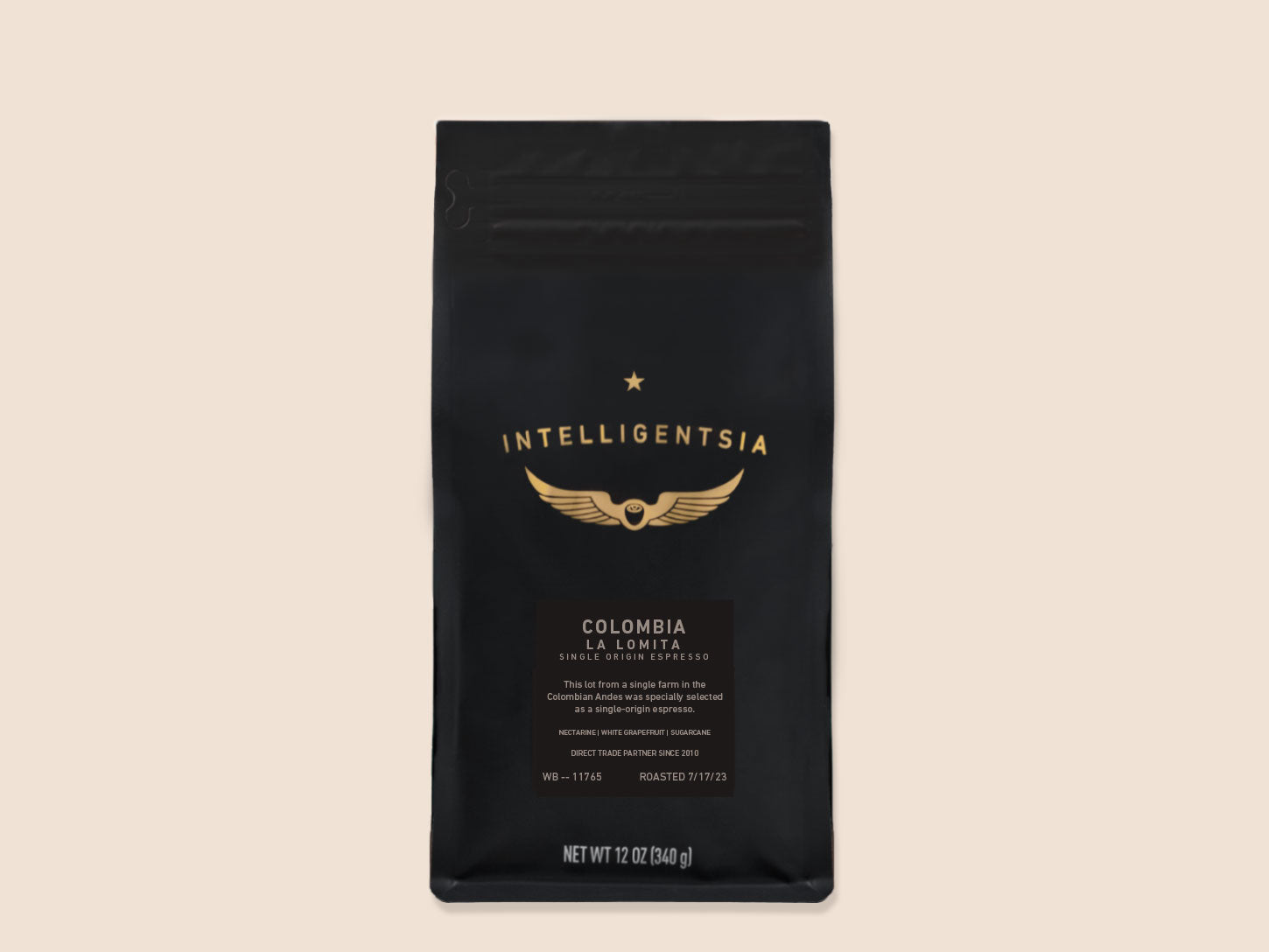How SOE Single Origin Espresso Improves Your Wake-Up Brew
How SOE Single Origin Espresso Improves Your Wake-Up Brew
Blog Article
Understanding Coffee Beans: the Journey From Espresso to Blended Coffee Beans

The Origins of Coffee: A Global Point Of View
While you could think about coffee as a modern staple, its beginnings map back centuries, intertwining with societies across the world. The story starts in Ethiopia, where tale claims a goat herdsman named Kaldi discovered the energizing effects of coffee beans after seeing his goats frolicking energetically after eating them. This stimulated interest, bring about coffee's spread to Arab traders who cherished the brewed drink. By the 15th century, it got to Persia, Egypt, and Turkey, where coffee shops became social hubs for conversation and society.
As trade paths broadened, coffee made its way to Europe in the 17th century, swiftly gaining appeal. It changed from a mystical beverage into a day-to-day routine, intellectual exchanges and inspiring events. Each culture added its distinct spin to coffee preparation, enriching its background. This global trip highlights just how coffee attaches us, going beyond boundaries and unifying varied traditions via a simple bean.
Growing and Harvesting of Coffee Beans
As coffee's journey developed, the emphasis changed to the farming and harvesting of certain bean ranges, specifically those used for coffee. You'll find that coffee beans commonly come from Arabica or Robusta plants, each offering distinct flavors. The ideal growing problems consist of high altitudes and rich, well-drained dirt, which improve the beans' quality.
Throughout the harvest, selecting approaches differ. In some regions, workers hand-pick ripe cherries, guaranteeing only the most effective fruit mosts likely to handling. In other areas, mechanical harvesters are used, specifically on larger farms. Timing is important; you intend to collect when the cherries get to peak perfection for maximum flavor.
When collected, the beans are gotten ready for handling, which is vital in establishing their last taste. Recognizing the cultivation and collecting procedures provides you insight into what goes into your favored coffee, enriching your admiration for each and every mug.
Processing Approaches: From Cherry to Bean
Since you've discovered collecting coffee beans, let's discover exactly how those cherries change into the coffee beans you love. You'll see exactly how various harvesting strategies effect flavor, complied with by the necessary steps of fermentation and drying. We'll break down the milling and grading process that establishes your coffee's top quality.
Harvesting Strategies Explained
When it comes to coffee, recognizing harvesting techniques is essential, because they straight impact the taste and quality of the beans you appreciate. Careful choosing includes hand-picking just ripe cherries, guaranteeing you get the finest quality beans. Eventually, the option of gathering technique can substantially affect your coffee experience, so it's worth recognizing exactly how those beans made it to your mug.
Fermentation and Drying Out
After collecting, the next actions in processing coffee beans play a significant function in shaping their taste. You'll discover that fermentation is essential, as it assists break down the mucilage surrounding the beans, boosting their preference account. Relying on the technique, this procedure can last from a few hours to numerous days, with varying outcomes based upon temperature and moisture.
Sun-drying permits the beans to absorb flavors from the atmosphere, while mechanical drying out guarantees consistent dampness levels no matter of weather condition. Correct drying is crucial to protect against mold and protect the beans' high quality, inevitably influencing your cup of coffee.
Milling and Grading Process
As fermentation and drying set the phase for flavor growth, the milling and grading procedure warranties that only the very best coffee beans make it to your mug. This phase involves eliminating the outer layers of the coffee cherry, consisting of the parchment and husk. After milling, the beans are sorted by dimension and weight, making sure an uniform quality. You'll find that grading aids determine flaws and categorize beans, which affects flavor and aroma. Top quality beans receive a greater quality, resulting in a richer coffee experience. Once graded, the beans await packaging and delivery, preserving their special qualities. This precise process is vital for delivering the phenomenal preference you appreciate in every sip of your favored brew.
Roasting Techniques: Unlocking Flavor Prospective
When you roast coffee website here beans, the method you choose can drastically affect the taste account. Recognizing the partnership in between time, temperature, and toasting techniques is key to revealing the capacity of your mixture. Let's check out exactly how these components integrated to develop the perfect mug.
Toasting Approaches Described
While you may assume that all coffee roasting approaches yield the exact same results, the truth is that each method reveals one-of-a-kind taste potentials in the beans. Drum roasting makes use of a rotating drum to uniformly distribute warmth, enhancing caramelization and producing a well balanced taste. Air roasting, on the other hand, flows warm air around the beans, advertising a lighter roast with pronounced acidity.

Effect On Flavor Account
Various toasting techniques not only affect the procedure but my latest blog post also greatly affect the taste account of the coffee beans. Dark roasts, on the other hand, bring out strong, smoky tastes, often masking the bean's unique features. Comprehending these subtleties helps you value the artistry behind your cup of coffee, improving your total experience with every sip.
Time and Temperature Level Factors
To release the complete flavor possibility of coffee beans, both time and temperature throughout the roasting procedure play significant duties. When toasting, you'll locate that greater temperature levels can rapidly develop flavors, but if you hurry it, you may wind up with burnt notes. On the other hand, reduced temperature levels enable for a more gradual taste development, showcasing the beans' distinct features.

Timing is equally as important; expanding the roast too long can result in a loss of level of acidity and illumination, while as well short a roast may leave the beans underdeveloped. Discovering that sweet area calls for practice and experimentation. By readjusting these aspects, you can disclose the rich, complicated tastes concealed within each bean, creating a genuinely exceptional coffee experience.
The Art of Mixing: Crafting Special Coffee Profiles

Beginning by picking a base coffee that supplies a strong foundation. An intense Ethiopian bean can bring fruitiness, while a rich Brazilian coffee includes body.
As you mix, maintain in mind that each combination informs a tale. You're not just making coffee; you're developing an experience. So, take your time, taste often, and delight in the journey of finding your trademark blend.
Developing Techniques: Exactly How Prep Work Impacts Taste
Blending coffee opens up a domain of taste opportunities, but how you brew that mix can significantly influence your last mug. On the various other hand, a pour-over highlights image source the coffee's clearness and illumination, perfect for showcasing delicate notes.
Espresso, with its high stress, produces a concentrated shot that emphasizes sweet taste and crema. If you prefer a lighter brew, consider a cool mixture approach; it yields a smooth, less acidic preference.
Eventually, testing is crucial. Readjusting variables like water temperature level, grind dimension, and make time can transform your coffee's profile. So, embrace the art of developing to uncover the tastes hidden in your coffee blends. The right approach can raise your experience to brand-new heights.
The Future of Coffee: Sustainability and Advancement
As the coffee sector progresses, sustainability and technology are ending up being important for addressing ecological difficulties and meeting customer demands. You'll notice that more coffee companies are embracing environmentally friendly methods, from sourcing beans morally to executing lasting farming strategies. These changes not only help the world yet also enhance the high quality of the coffee you appreciate.
You may see advancements like naturally degradable packaging and water-saving brewing techniques that decrease waste. Advanced modern technology, such as blockchain, is also becoming preferred, guaranteeing openness in the supply chain, which enables you to map your coffee back to its beginnings.
On top of that, buying neighborhood areas and supporting farmers with fair trade initiatives promotes a more sustainable coffee community. As you drink your following mug, keep in mind that your options can contribute to a brighter future for coffee. By selecting lasting brand names, you're not just delighting in a drink; you're making a favorable influence on the world.
Regularly Asked Inquiries
What Is the Distinction In Between Arabica and Robusta Beans?
Arabica beans are smoother, sweeter, and have a higher acidity, while robusta beans are stronger, much more bitter, and contain even more caffeine. You'll notice these differences in flavor and fragrance when brewing your coffee.
Just How Does Elevation Affect Coffee Bean Flavor?
Elevation influences coffee bean flavor substantially. Greater elevations create beans with brighter level of acidity and complicated flavors, while reduced altitudes usually produce beans that are larger and much less nuanced. You'll notice these differences in your cup!
What Are the Health Advantages of Drinking Coffee?
Consuming coffee can improve your energy, enhance psychological emphasis, and even improve physical performance. It's abundant in antioxidants, may reduce the danger of specific illness, and can promote a healthier metabolic rate when consumed in moderation.
Can Coffee Beans Be Reused for Developing?
Yes, you can recycle coffee beans for developing, yet the taste may be weak. If you appreciate exploring, try recycling them in different methods, like chilly mixtures or contributing to healthy smoothies for an added kick.
Exactly how Should I Shop Coffee Beans for Freshness?
To keep your coffee beans fresh, save them in a closed container in an awesome, dark location. Avoid subjecting them to light, dampness, or heat, as these elements can quickly deteriorate their flavor and scent.
Comprehending Coffee Beans: the Trip From Coffee to Blended Coffee Beans.
Now that you've learned regarding harvesting coffee beans, allow's explore exactly how those cherries change into the coffee beans you love.When you roast coffee beans, the technique you choose can substantially influence the flavor profile - Single Origin Espresso.While you may think that all coffee toasting methods generate the same outcomes, the truth is that each method discloses distinct taste potentials in the beans.Different roasting approaches not just influence the process but additionally considerably affect the taste profile of the coffee beans
Report this page